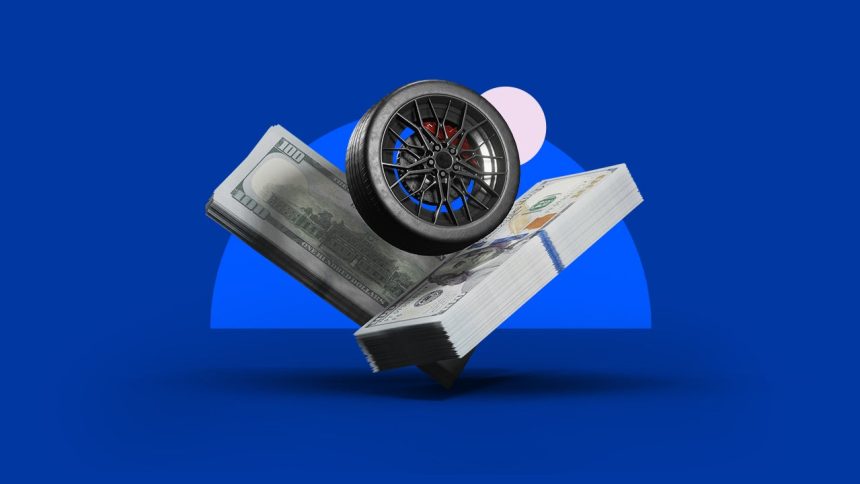Key takeaways
- Down payments reduce the amount of money you must borrow and, thus, the interest you pay while repaying your car loan.
- Experts recommend a down payment of at least 20 percent.
- Larger down payments may prevent you from becoming upside-down on your loan.
A down payment is made up of the cash you have on hand, the value of your trade-in and any rebates you qualify for. All of these work together to reduce the amount you need to borrow. A larger down payment can show lenders you are serious, which in turn can help you get the best auto loan rate.
Experts tend to recommend putting down 20 percent or more on the vehicle. However, vehicle prices remain high, and many have less savings available to spend on things like down payments. But even with tighter budgets, any down payment can mean money saved in the future.
5 benefits of making a car down payment
Down payments are usually a necessity. Lenders frequently want at least 10 to 15 percent down. And it may be better for your finances to put down even more. After all, it can save you money each month and help you pay less interest.
The larger your down payment, the less you’ll need to borrow — leading to a shorter loan term, a lower interest rate, and fewer finance charges. The ultimate goal is to get off the treadmill of car payments and enjoy as many years as possible with a paid-off car and no car payments in the monthly budget.
— Greg McBride, Bankrate Chief Financial Analyst
1. Lower monthly payment
Since putting money down reduces the overall amount you need to finance, you can expect to pay less each month. Consider how a 20 percent down payment will impact your monthly payment for a $30,000 auto loan with a 6.60 percent interest rate and a 48-month term.
| Amount borrowed | Down payment | Monthly payment |
|---|---|---|
| $30,000 | $0 | $713 |
| $27,000 | $3,000 | $642 |
| $25,500 | $4,500 | $606 |
| $24,000 | $6,000 | $570 |
A lower monthly payment also leaves more room in your budget for costs that may arise during vehicle ownership. Remember that your vehicle will cost more than your loan payment. You’ll also have to cover insurance, gas and maintenance. Monthly car ownership and operation costs averaged $1,025 as of 2024, according to AAA.
This is especially important as many might need extra cash on hand. Bankrate’s 2025 Emergency Savings Report found that just 41 percent of U.S. adults would pay for an emergency expense of $1,000 or more from their savings. A lower monthly cost could let you stash more for urgent needs.
2. Less interest paid
One of the biggest benefits of a larger down payment is that it reduces the amount you need to borrow. When you borrow less, you pay less interest. More money in your pocket — and less in the lender’s — is always a good thing.
A down payment can make a big difference in the overall cost of an auto loan. Using the same example, the amount of your down payment will impact the total cost of your auto loan.
| Amount borrowed | Down payment | Total interest paid |
|---|---|---|
| $30,000 | $0 | $4,216 |
| $27,000 | $3,000 | $3,794 |
| $25,500 | $4,500 | $3,584 |
| $24,000 | $6,000 | $3,373 |
In these scenarios, your down payment could equate to saving between $422 and $843 in interest.
3. More equity starting out
Equity is the difference between what you owe on an auto loan and the car’s potential sale price. Putting down a larger down payment will increase your equity because you won’t need to finance as much through a lender.
Cars are a depreciating asset. As the value of your vehicle decreases, you’re more likely to be upside down on your loan, which is when you owe more than your car is worth. A larger down payment protects against depreciation because the equity acts as a buffer.
This can be problematic when it’s time to sell your vehicle because you will have to pay the difference out-of-pocket or rolled into a new loan. This could lead to an unaffordable monthly payment, higher borrowing costs and another upside-down loan.
A larger down payment protects against depreciation because it means you are investing more in the vehicle’s equity, and that equity acts as a buffer.
4. Potentially lower rates
Some lenders may even be willing to give you a lower rate if you have a significant down payment. A down payment tells your lender that you have a better grasp on your finances and thus are less of a risk for default.
However, other factors have a bigger influence on your interest rate, like credit score and income. So this approach is far from guaranteed to get you a lower rate.
Still, a large down payment may help make up for areas you might not be as strong in.
5. Better acceptance rate
On top of the likelihood of saving money, you give yourself better odds of loan acceptance. It can convince lenders to offer you more competitive financing terms. However, not putting money down may not be a deal breaker if you have good to excellent credit.
If you have a low credit score, though, it might be challenging to secure a competitive rate or acceptance without the help of a down payment.
What is a good down payment on a car?
The most common advice is to put down 20 percent or more on a vehicle. Simply, a larger down payment is preferable — the less you need to borrow, the better off your finances will be.
However, many borrowers cannot afford so large a down payment.
The average price of a new vehicle in February was $48,039, according to Kelley Blue Book. Keeping in mind that a 20 percent down payment is considered standard, you will need almost $10,000 on hand to comfortably purchase a new vehicle. Even used cars averaged $25,006 at the start of March — which means putting just over $5,000 toward a down payment.
Many buyers successfully finance a car with less than a 20 percent down payment. The average down payment at the end of 2024 was $6,856 for a new car or $4,219 for used, according to Edmunds. This works out to a down payment equal to about 14 percent and 17 percent, respectively.
What if you can’t afford a vehicle down payment?
If you don’t have room in your budget to make a vehicle down payment, you have other options. You certainly don’t want to empty your savings for a down payment.
- Consider leasing: Leasing a car not only tends to carry a less expensive monthly payment but also a down payment, which is not typically required.
- Purchase gap insurance: Without a down payment, you are more likely to become upside on the loan. Purchasing gap insurance can help minimize that risk.
- Apply with a cosigner: By applying for an auto loan with a cosigner with a strong credit history, you are more likely to receive a good interest rate.
- Trade in your vehicle: If your current vehicle is paid off, a trade-in can act as a down payment. Or if your car is financed, and you owe less than it’s worth, you can trade it in and use the positive equity towards a down payment on a new ride.
While 20 percent is the most common recommendation, putting down as little as 10 percent is still beneficial. Some experts say it might not be necessary if you can score 0 percent APR — but most people won’t qualify for that.
Bottom line
The more you can pay upfront, the better off you will be. A down payment of 20 percent is the go-to amount, but you can always put down more if you can afford it. Avoid paying less than 10 percent — especially if you have bad credit — so you can still secure a competitive interest rate.
Take the time to compare auto loans and find financing before car shopping. This way, you will know exactly how much you can afford and how much you will need for a large down payment.
Read the full article here
















